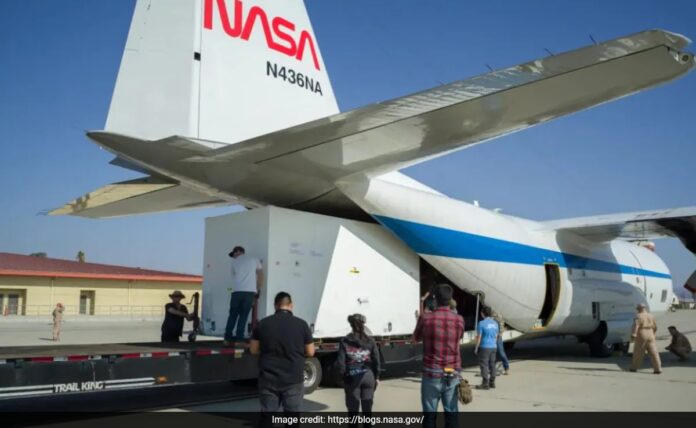
The radar antenna reflector for the NASA-ISRO Synthetic Aperture Radar (NISAR) mission arrived at the spacecraft integration and test facility of the Indian Space Research Organisation (ISRO) in Bengaluru this week.After its arrival in Bengaluru on Tuesday aboard a NASA C-130 cargo plane, the reflector was transported to the ISRO Spacecraft Integration and Test Establishment for its further reintegration with the NISAR spacecraft to prepare for testing, NASA said.The satellite, a collaborative effort between NASA and ISRO to observe the Earth, is scheduled for launch from the Satish Dhawan Space Centre in Andhra Pradesh’s Sriharikota in early 2025. The leading space agencies will be coordinating to determine an official launch readiness date for the same.Radar Antenna Reflector’s RoleThe drum-shaped radar antenna reflector, measuring about 39 feet (12 meters) across, is among NASA’s contributions to the joint mission. It has been specially designed to help focus the transmitted and received microwave signals to and from the surface of the Earth. This will enable NISAR to scan roughly all of the Earth’s land and ice surfaces twice every 12 days to collect scientific data.This reflector was earlier stationed at the specialised facility in California as engineers applied reflective tape to it, besides taking other precautionary measures to mitigate temperature increases.NISAR missionThe objectives of the joint NISAR mission are aimed at revolutionising understanding of the planet.Key observations from NISAR will help researchers worldwide get unprecedented insights into the changes in the Earth’s surface, including the ice sheets, sea ice and glaciers.Additionally, it will monitor changes in the forest and wetland ecosystems, besides tracking the movement and deformation of the crust like landslides, earthquakes as well as volcanic activities.The rapid coverage from NISAR is aimed at providing multiple opportunities for disaster response. It will produce data to assist in mitigating and assessing the damage, providing observations before and after disasters in short time frames.For the mission, NASA provided the L-Band SAR payload system, while ISRO supplied the S-Band SAR payload. Both of these SAR systems will help make use of a large size common unfurl able reflector antenna, the Indian Space Agency earlier said.Besides this, NASA is also providing engineering payloads for the mission.

